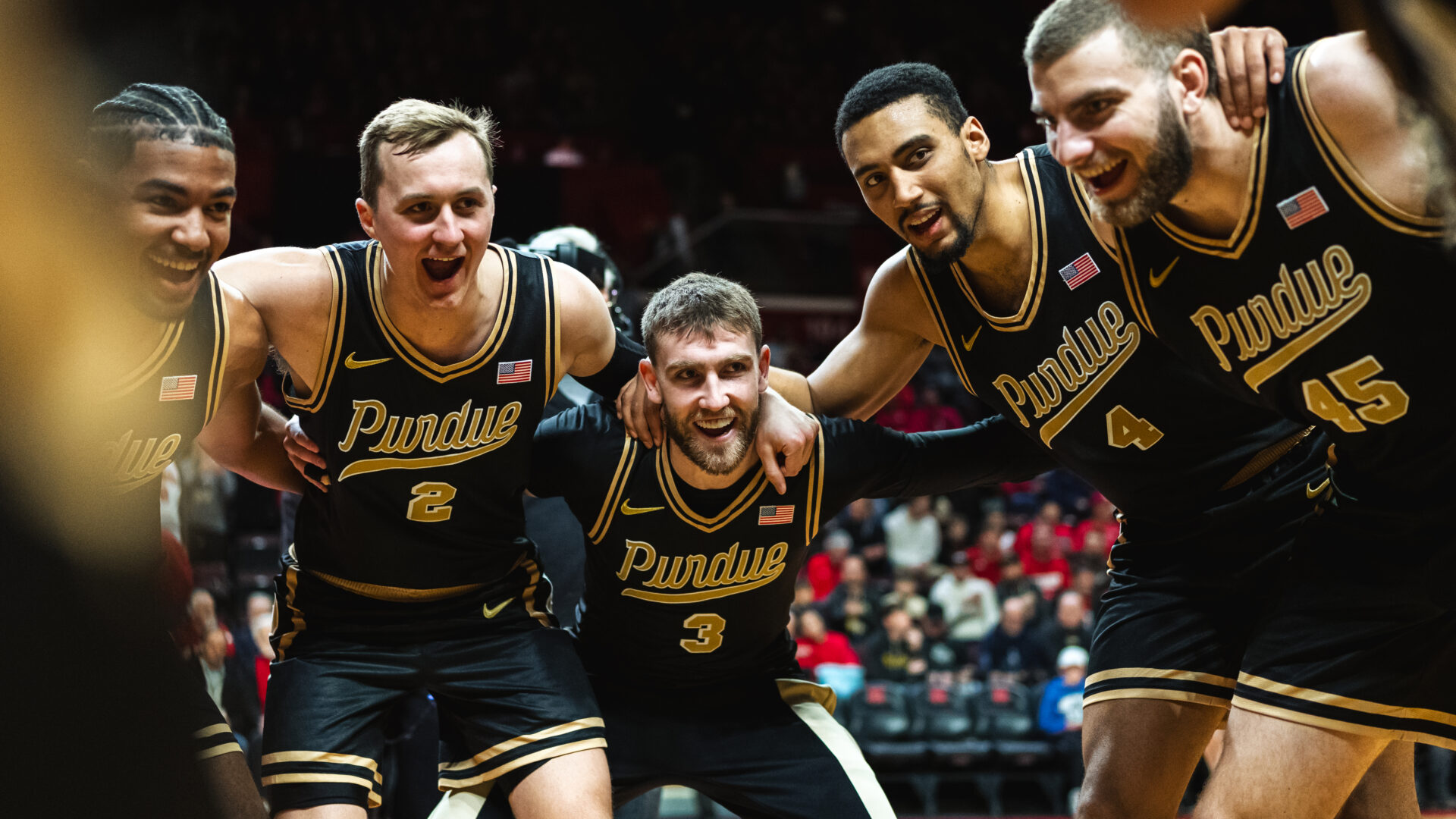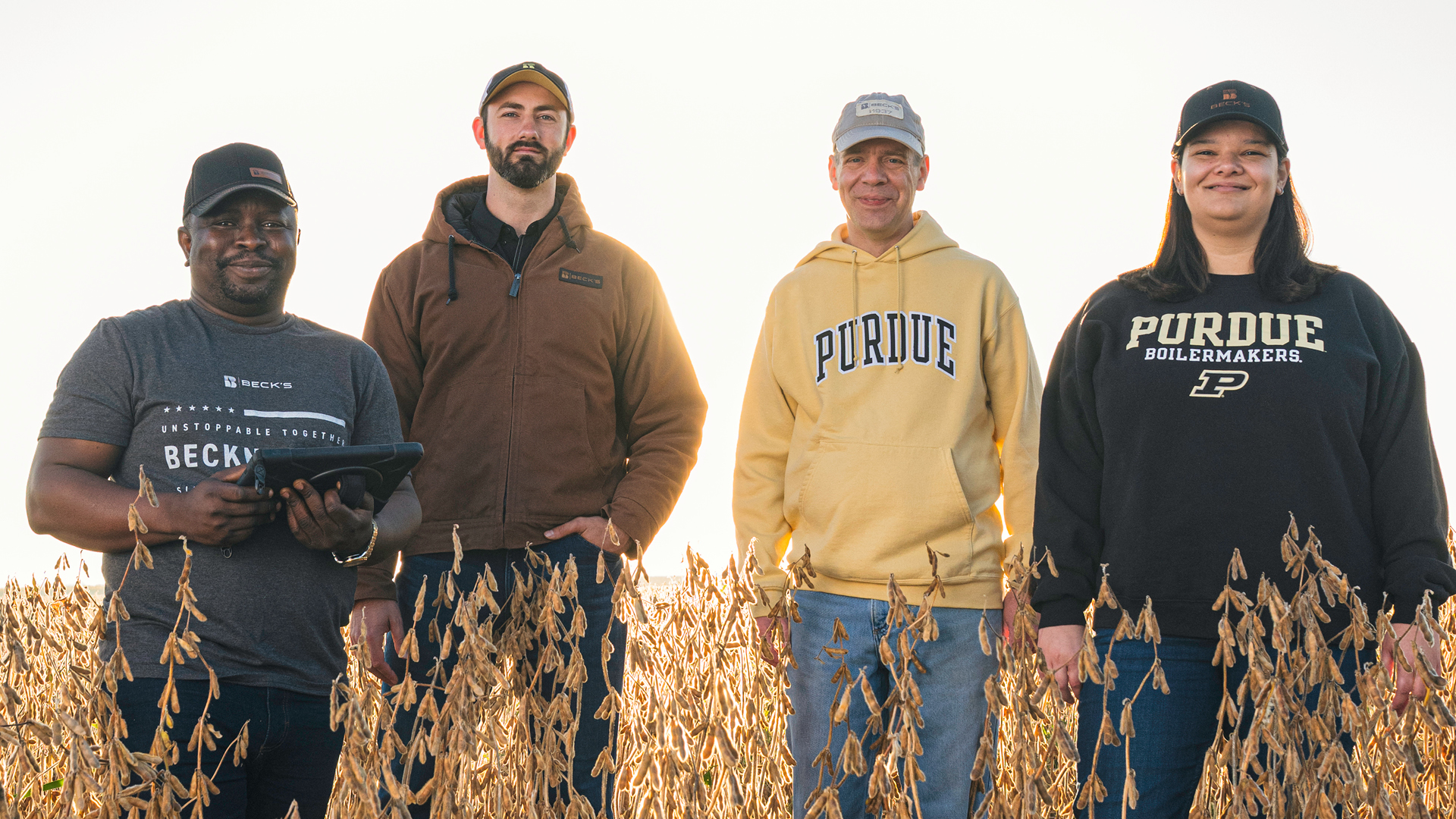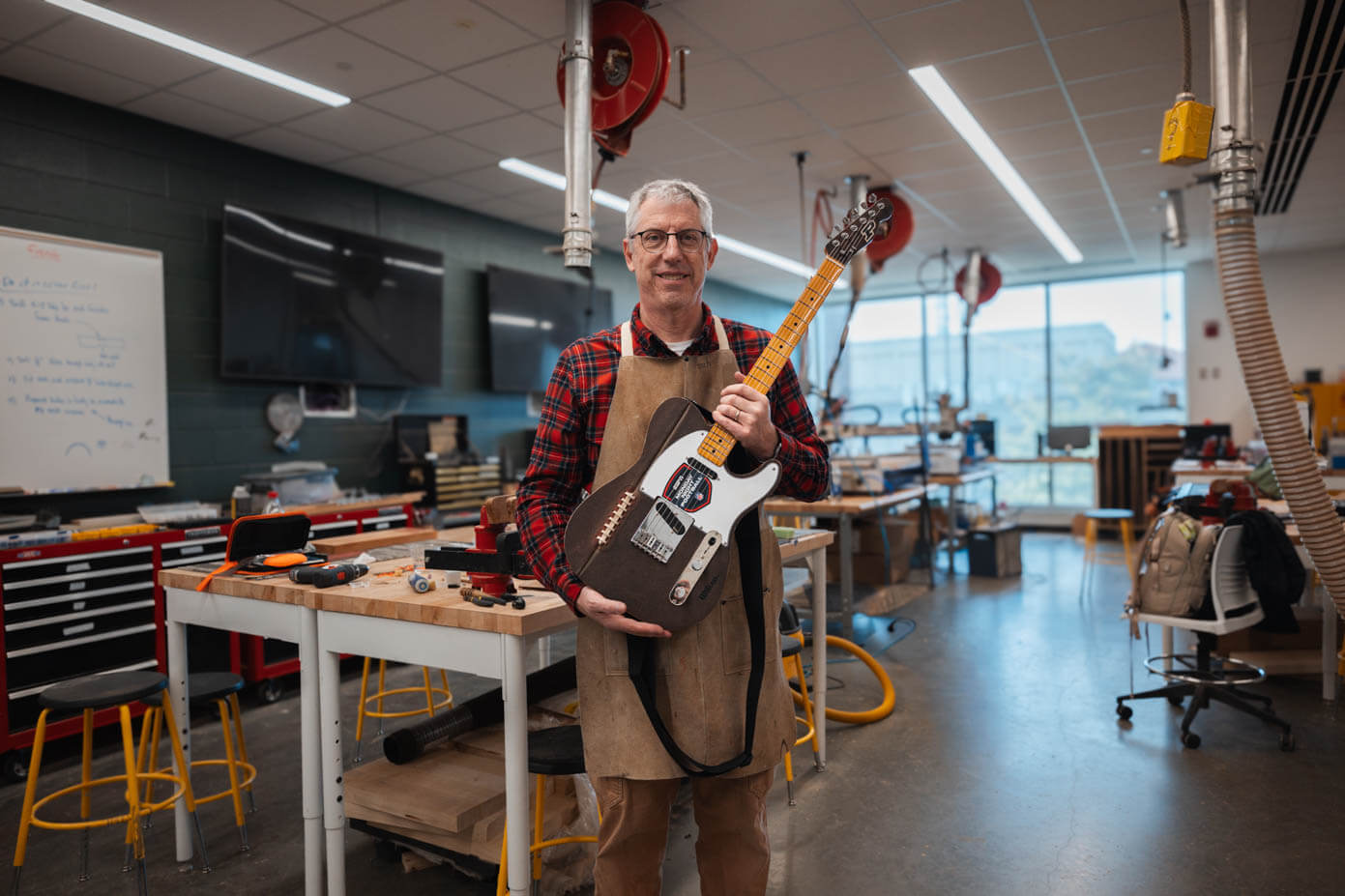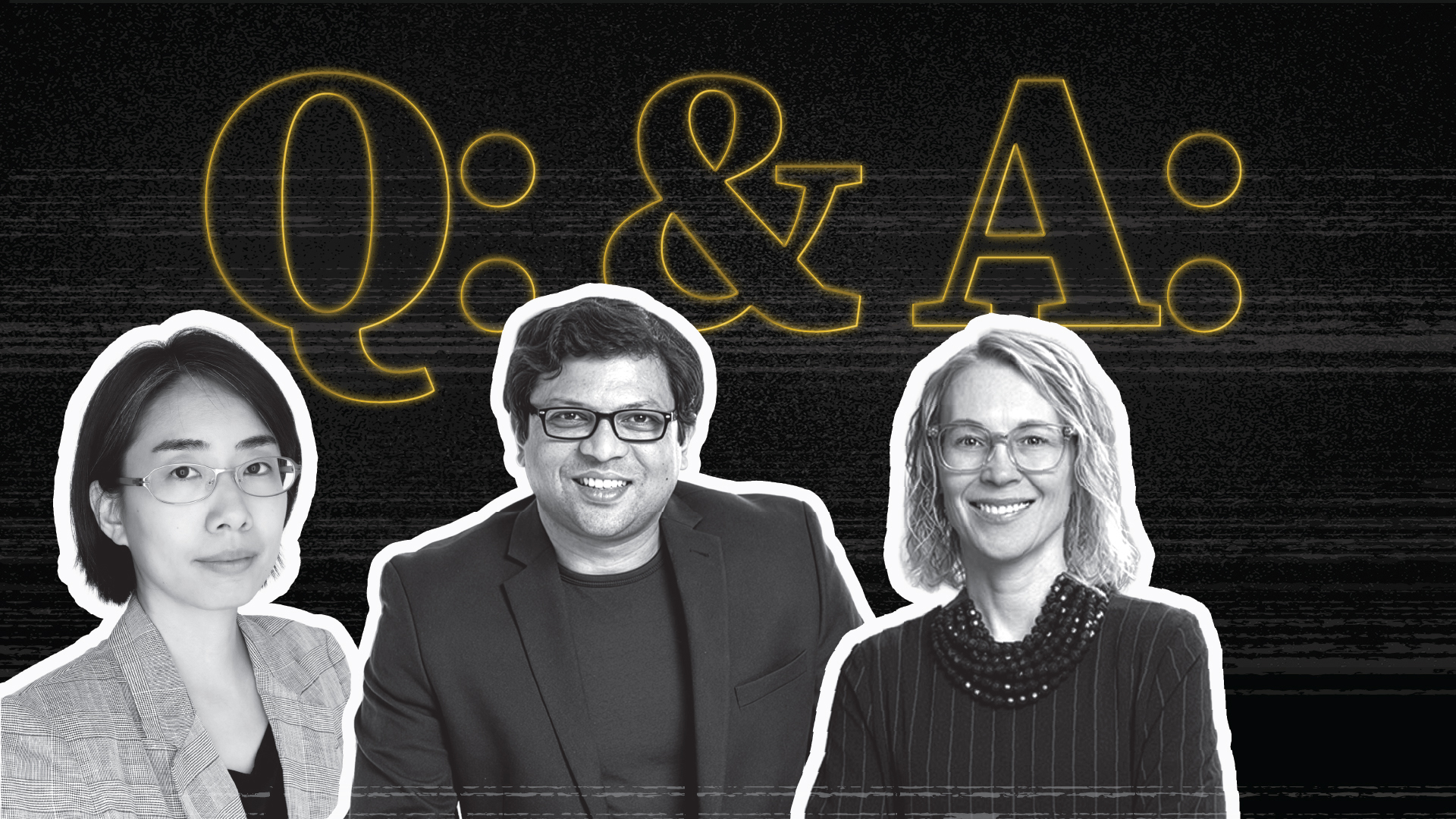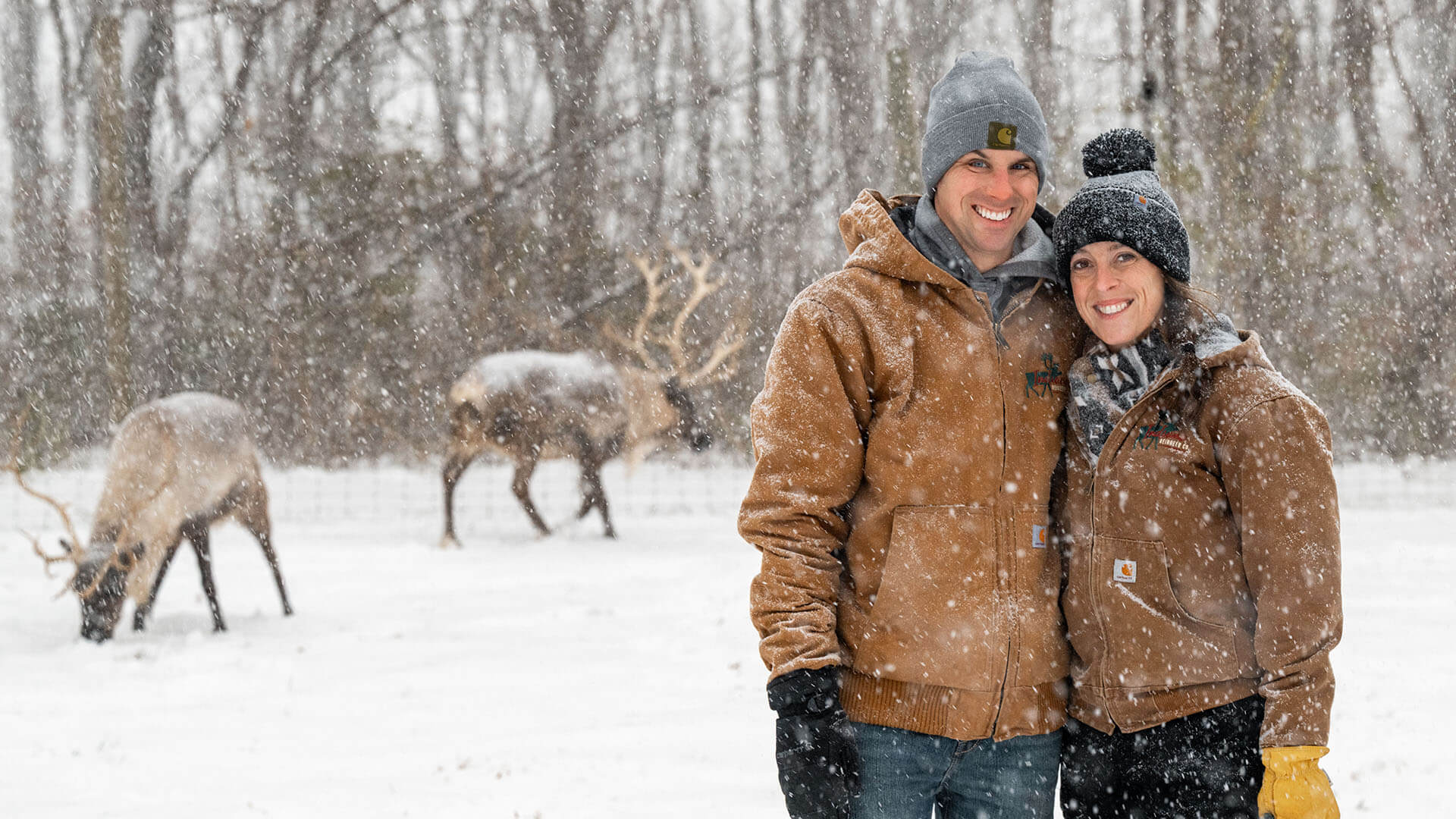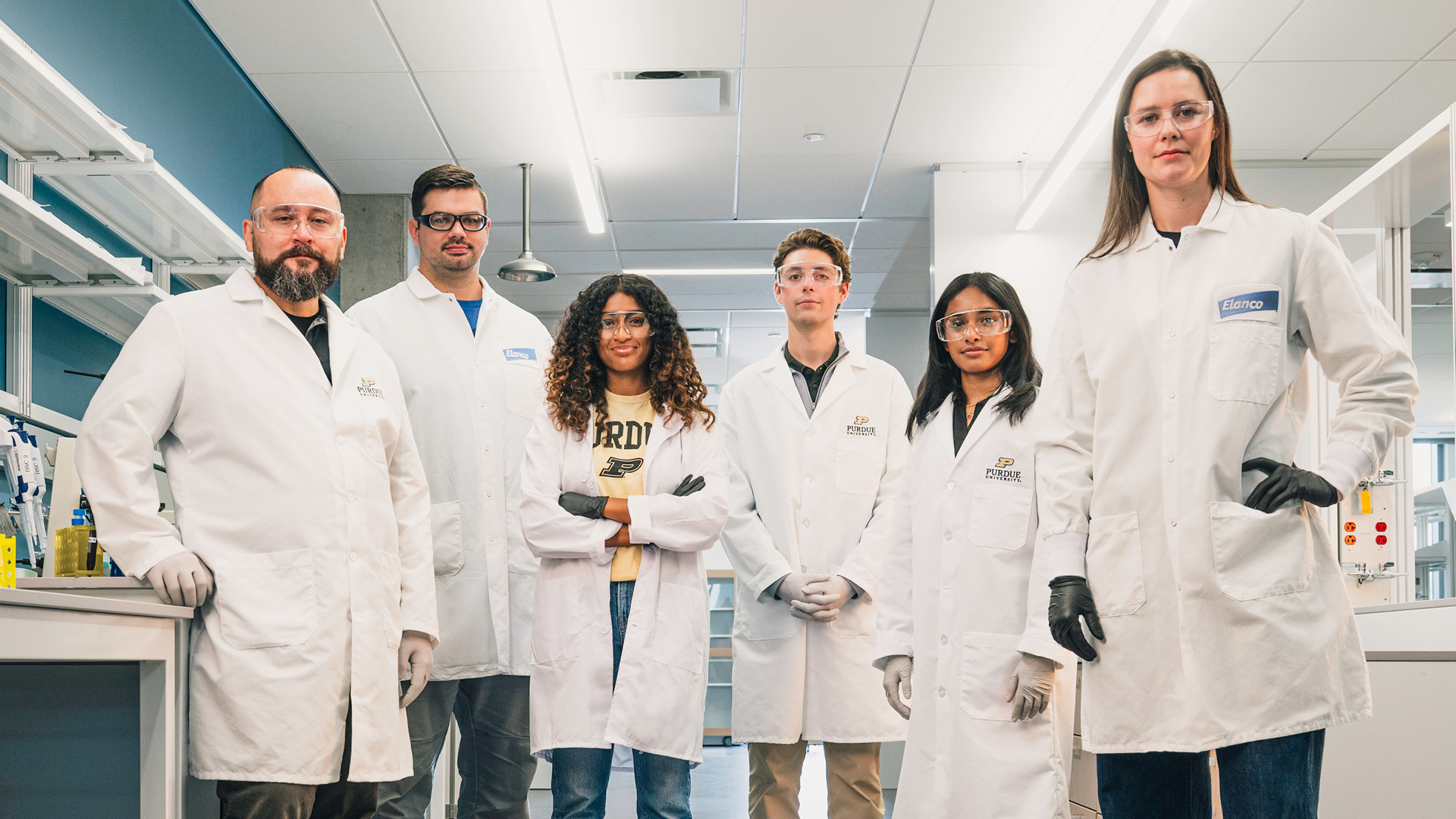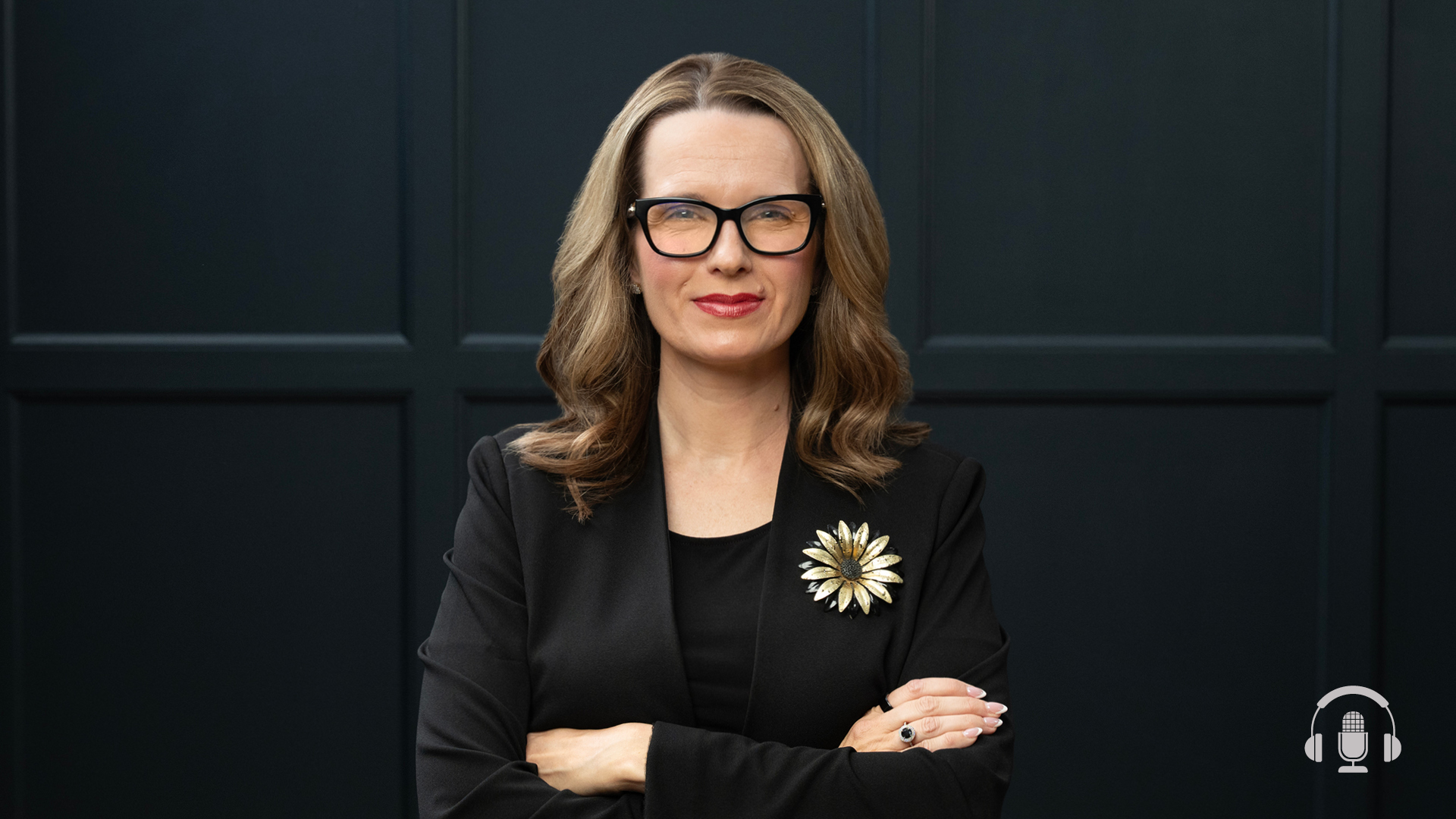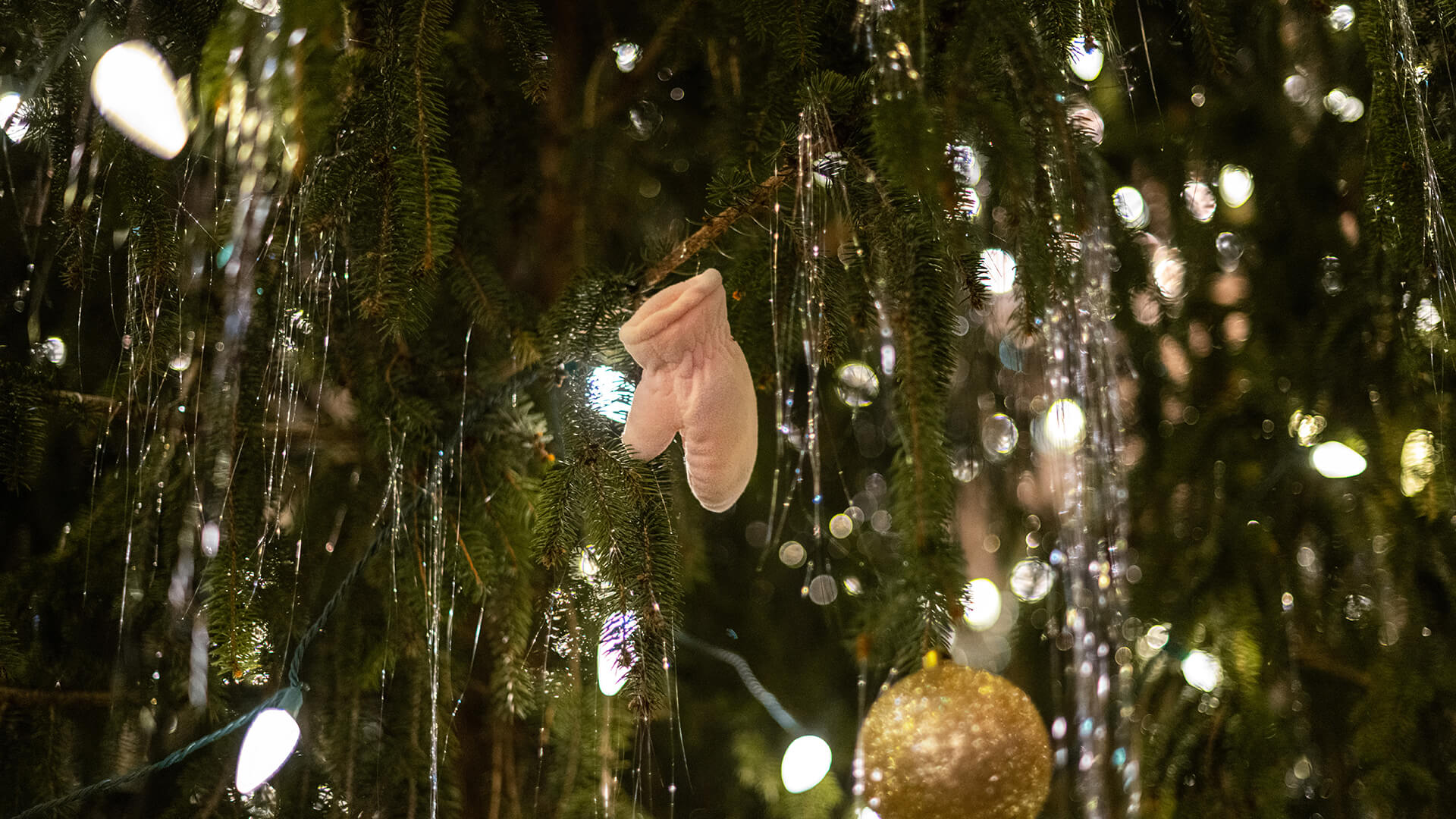Celebrating 150 years of Purdue engineering excellence
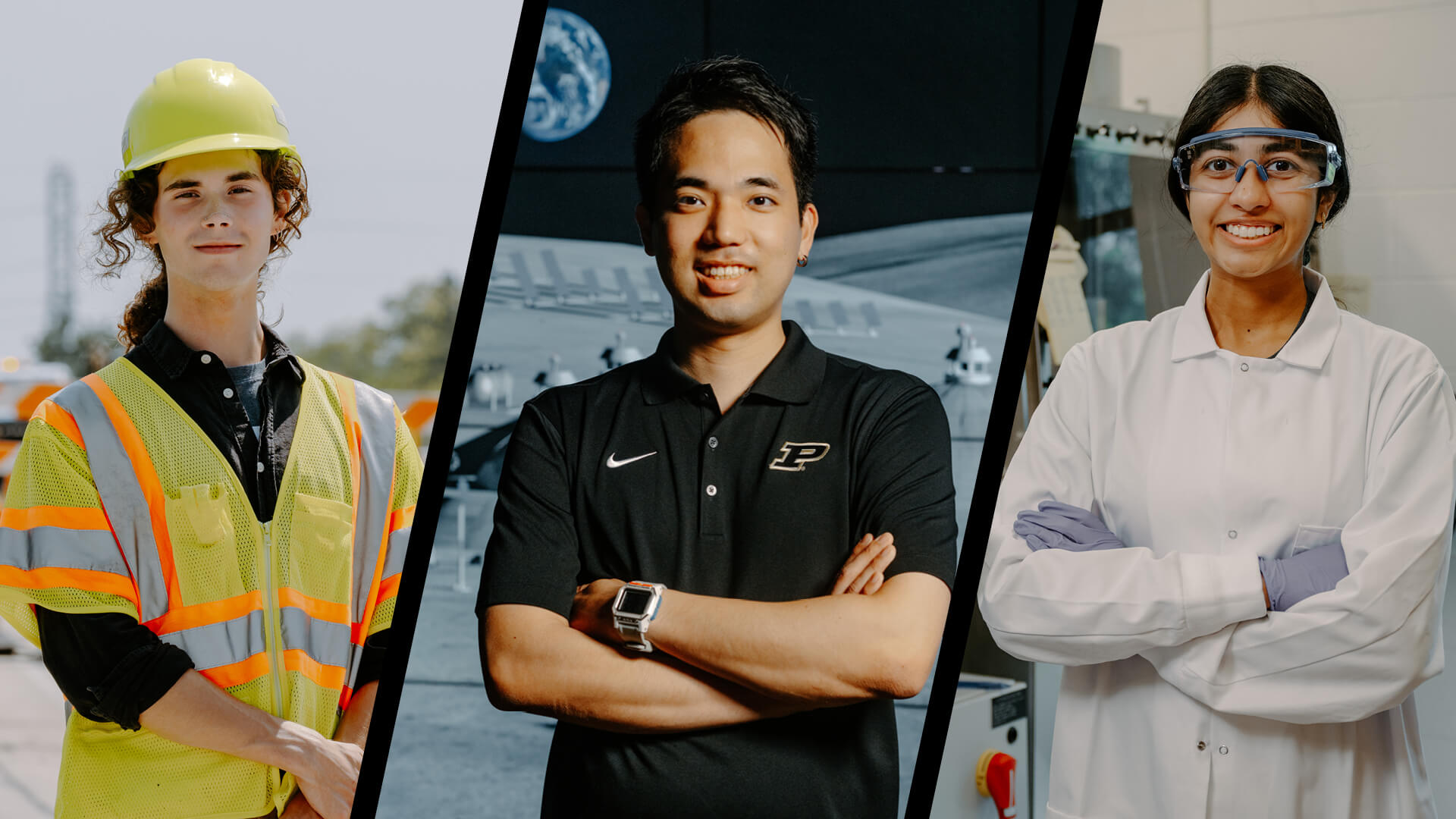
Ben O’Brien, Takaharu Igarashi and Anika Bhoopalam are among the 16,000 current students who will extend the Purdue College of Engineering’s tradition of excellence. (Purdue University photos/Kelsey Lefever)
Today’s Purdue engineering students will change the world, as their predecessors have done for the last 150 years
Takaharu Igarashi (MSAAE ’21) is pursuing a PhD in aeronautics and astronautics that will allow him to someday work as a space architect.
That’s exactly what it sounds like. Igarashi wants to combine the engineering education he receives at Purdue with the architectural training he completed in his native Japan, allowing him to design structures that are fit for extraterrestrial habitation.
Anika Bhoopalam wants to work in semiconductor manufacturing and use her Purdue chemical engineering background to introduce groundbreaking innovations — particularly related to solar or other forms of renewable energy — that increase environmental stability.
And Ben O’Brien hopes to influence the adoption rate of electric transportation by pairing technical knowledge gained as a Boilermaker civil engineering student and policy analysis conducted while simultaneously majoring in political science.
Those are just three of the more than 16,000 stories that ambitious students in Purdue’s College of Engineering could share about how they plan to change the world, contributing to a tradition that is now 150 years strong. Starting with a kickoff event on Sept. 13, the university will acknowledge its engineering sesquicentennial with a yearlong celebration packed with special events.
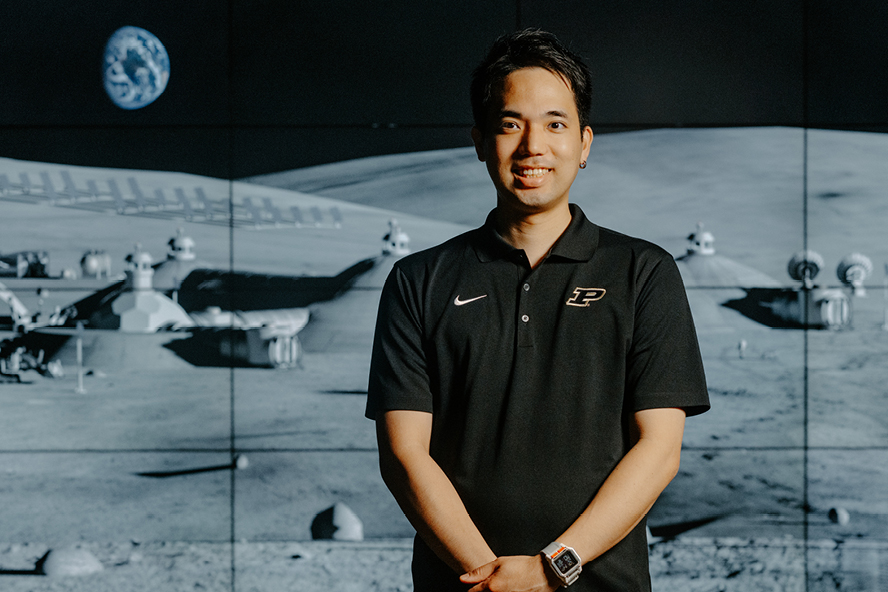
“The stories of Purdue engineering for one-and-a-half centuries are the stories of hundreds of thousands of engineering alumni, the stories of world-class discovery of knowledge and transformational problem-solving impact, the stories of intellectual pursuit of the highest caliber by our faculty,” says Purdue President Mung Chiang, who spent five years as the John A. Edwardson Dean of the College of Engineering prior to becoming the university’s 13th president in 2023. “The stories continue into the next 150 years with new scope, accelerated speed and amplified scale as Purdue engineering reaches the pinnacle of excellence in everything its people choose to pursue.”
The incredible accomplishments of those Boilermakers are exactly why Purdue’s name became synonymous with engineering excellence, adds Arvind Raman (MSME ’94), Chiang’s successor as the dean of engineering.
“When you ask the question, ‘Why is the brand so prestigious?’ it must be because of 150 years of excellence in our students who have graduated and gone on to do great things,” says Raman, himself an alumnus and faculty member in mechanical engineering. “The brand builds based on the talents we graduate.”
Tradition of innovation
So many compliments could be heaped upon those talents produced and great things accomplished.
The first and most recent people to set foot on the moon, Neil Armstrong (BSAE ’55) and Eugene Cernan (BSEE ’56), were both Boilermaker engineers.
So was Maurice Zucrow, the first to receive a PhD in mechanical engineering from Purdue, who returned to his alma mater and established what would become the world’s largest academic propulsion lab, now known as the Maurice J. Zucrow Laboratories.
The designer of the Golden Gate Bridge? That was Purdue engineering professor Charles Ellis.
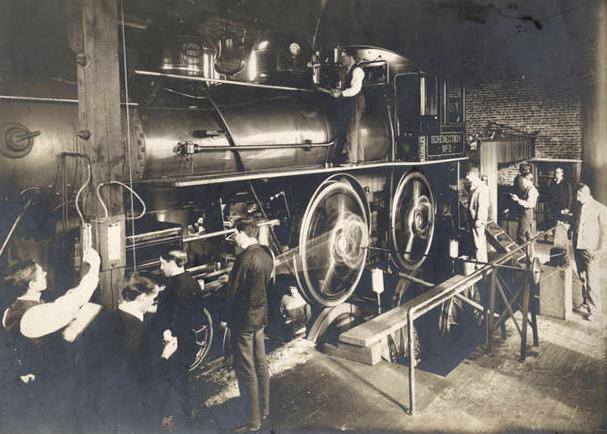
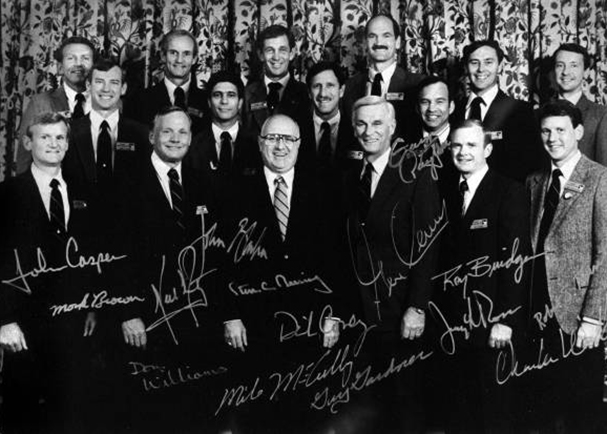
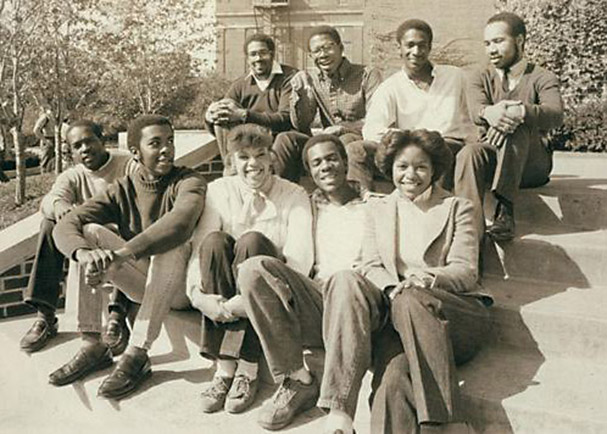
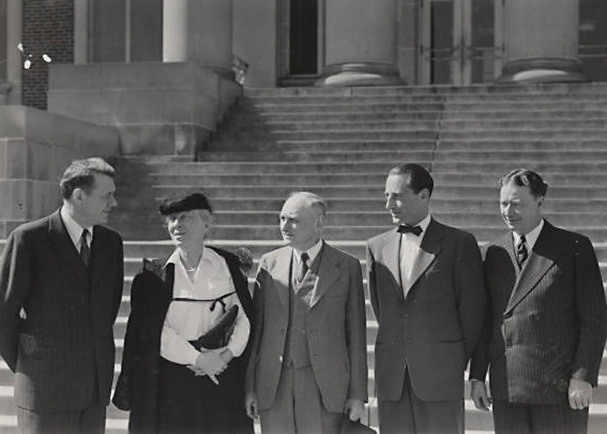
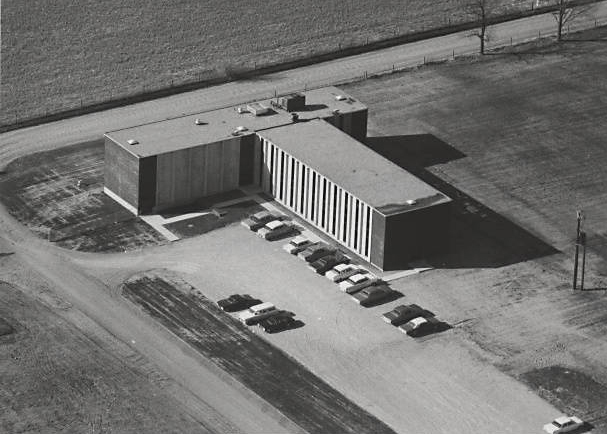
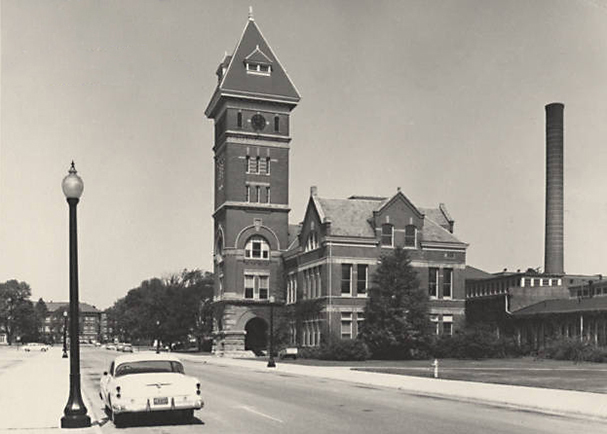
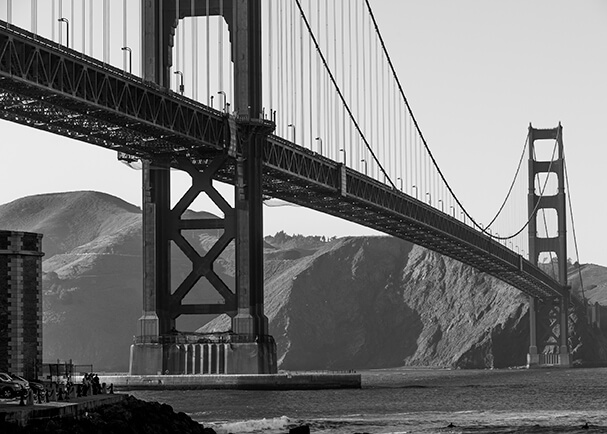
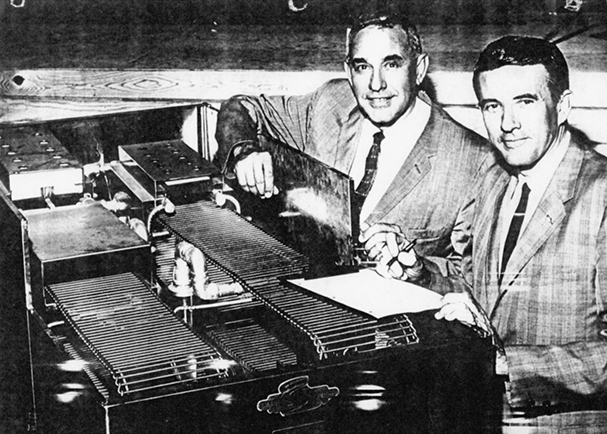
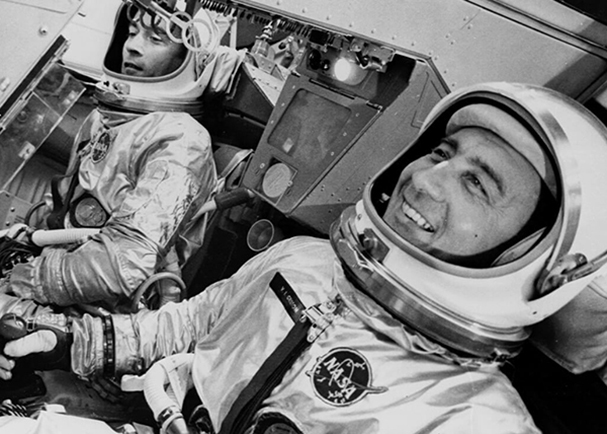
And the list of Boilermaker engineering innovations and patents could stretch from West Lafayette to the Sea of Tranquility, where Armstrong landed the Eagle lunar module on the moon’s surface in 1969. These revolutionary creations include anything from the metal-oxide-semiconductor field-effect transistor (or MOSFET, an essential component in most electronic devices) co-invented by Martin (John) M. Atalla (MSME ’47, PhD ME ’49) to the soft-serve ice cream machine created by Frank Thomas Jr. (BSME ’41).
It would be impossible to document every distinguished alum and noteworthy achievement, but it’s reasonable to assert that Boilermaker engineers have impacted virtually every aspect of modern life.
And they’ll continue to do so, rising to embrace societal challenges that might not even exist yet. Remember, Gus Grissom (BSME ’50), Armstrong and Cernan didn’t come to Purdue to become astronauts, an occupation that did not exist when they enrolled. But their rigorous Purdue training helped them become NASA pioneers and pave the way for 23 more Boilermaker engineers (plus College of Science graduate Drew Feustel) to follow them into space thus far.
Foundations of engineering excellence
Purdue’s history as an engineering-focused university originates with its creation via the Morrill Act of 1862, which emphasized educations in agriculture, the mechanic arts (the precursor to modern-day engineering) and military tactics for working-class people who had been previously ignored within American higher education.
Ever since the university introduced four-year curricula in civil and mechanical engineering in 1874, hundreds of thousands of Purdue graduates have earned engineering diplomas, using that education to improve their families’ economic circumstances and advance their communities, nations and humankind.
“It’s amazing to see how over 150 years, Purdue engineering has contributed significantly in educating the sons and daughters of the working classes and keeps making sure that those doors of opportunity remain wide open,” Raman says.
As time has passed and society has evolved, Boilermakers have taken important steps to ensure that every student has a fair chance to capitalize upon those opportunities. Because of recruitment and retention obstacles that women and minority students encountered, the nation’s first Women in Engineering program debuted at Purdue in 1969, and the university’s Minority Engineering Program (1974) and founding chapter of the National Society of Black Engineers (1975) became models of success that other universities would emulate.
The College of Engineering has also frequently adapted its educational portfolio to accommodate student interest and societal need, introducing the nation’s first freshman engineering program (1953) and first School of Engineering Education (2004) while also adding studies in disciplines like biomedical engineering and motorsports engineering — housed at Purdue’s Indianapolis campus — where potential employers and industry partners have a sizable footprint within the state of Indiana.
When you ask the question, ‘Why is the brand so prestigious?’ it must be because of 150 years of excellence in our students who have graduated and gone on to do great things. The brand builds based on the people you produce.
Arvind Raman
John A. Edwardson Dean of the Purdue College of Engineering
A wealth of opportunities
There is also an ever-growing list of initiatives in which engineering students can tailor their educational paths to accommodate personal interests, whether through a program like multidisciplinary engineering or interdisciplinary engineering studies, through a joint degree offering with another college at the university, or through research opportunities, co-ops, and internships that can shape students’ futures.
The stories of Bhoopalam, O’Brien and Igarashi reveal some of these opportunities for Boilermaker engineers to broaden their horizons.
Igarashi and O’Brien both joined Purdue research collaboratives: O’Brien in the Advancing Sustainability through Powered Infrastructure for Roadway Electrification (ASPIRE) initiative, a National Science Foundation-backed Engineering Research Center focused on advancing sustainable electrified transportation, and Igarashi in the Value through Reliability, Safety, and Sustainability Lab led by Karen Marais, professor of aeronautics and astronautics.
“The topic that everyone has in their mind is, ‘How can we make better buildings?’ And that question, that theme, is also the same thing that I have been thinking of in space architecture,” Igarashi says. “The definition of good architecture includes not failing, not doing things wrong. I feel that safety, preventing failures, is the fundamental part of being good. You have to do it right before you think about doing good.”
Meanwhile, Bhoopalam completed a pair of internships with semiconductor industry partners: one at chipmaker SkyWater Technology’s Florida facility and another in the Netherlands at ASML, an opportunity to work abroad that arose via Purdue’s Global Engineering Alliance for Research and Education program.
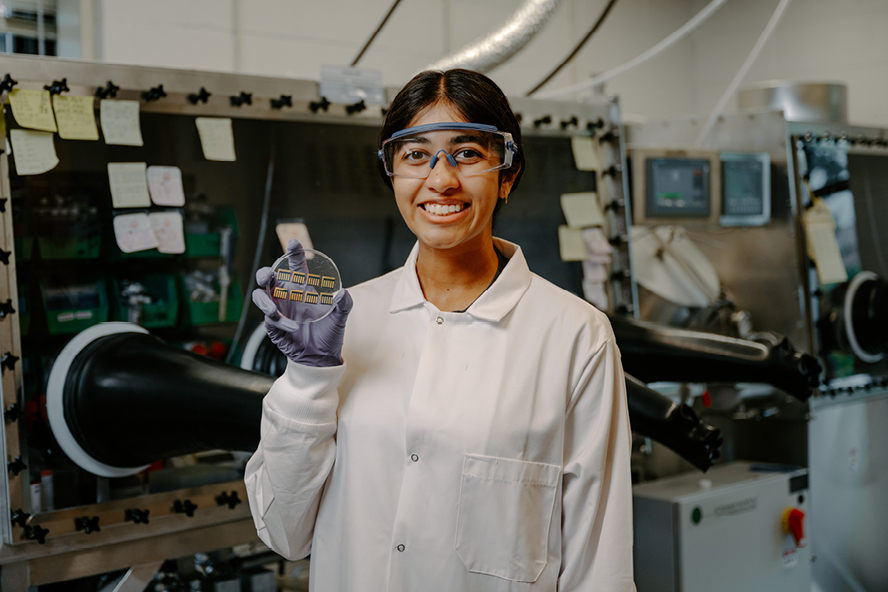

“After I went to SkyWater, it was like, ‘Wow, I really like this. I really like this industry and this work,’” Bhoopalam says. “I found it very fast-paced and exciting, and that changed my career path. I still want to work in solar panels, but also in chip manufacturing. And then going to ASML definitely fortified that.”
In addition to serving as a research assistant under Nadia Gkritza, professor of civil engineering and agricultural and biological engineering, and conducting survey work with ASPIRE, O’Brien also completed a summer internship in the transportation industry (introducing electric buses and building the required charging infrastructure with the transit authority in Washington, D.C.) and took advantage of a dual-degree offering that is unique to Purdue.
The Purdue College of Liberal Arts waives its core requirements for students who enroll in its Degree Plus program, making it possible for them to complement a bachelor’s degree in their primary major with a liberal arts degree in no additional time. That enabled O’Brien to gain both technical know-how from civil engineering and meaningful policy analysis experience through political science coursework that should benefit someone on the verge of a career in transportation.
“Degree Plus is a really unique part of Purdue engineering and the university as a whole that you don’t really find at other schools,” O’Brien says. “It opens up so many different career pathways, whether through research or public agencies or industry. It allows me to take my career in so many different places and is why I appreciate Purdue as a large and diverse school so much.”
Eyes on the future
Not long after Purdue commercial astronaut Sirisha Bandla (BSAAE ’11) returned to Earth in 2021 following her Virgin Galactic Unity 22 suborbital flight — which made her the third Indian woman to travel to space — Bandla’s former AAE professor Steven Collicott informed her via text message about a prospective student he had just led on a campus tour.
The student was interested in attending Purdue because it was Bandla’s alma mater.
It was a full-circle moment for Bandla, who became fascinated with space as a child and applied only to Purdue because it was where so many of the astronauts she idolized had attended college.
“It’s great that I’m following in the footsteps of people that have done incredible things and have blazed a trail before me,” Bandla said at the time. “It’s really nice to see that I’m helping blaze a trail for someone else, as well. They’re going to do the same for the generation after them. That’s how we grow as people.”
And it’s an example of how the Purdue engineering incubator will continue to advance society in the years ahead.
The university’s leaders have embarked on an ambitious agenda, placing Purdue engineers at the center of numerous initiatives with significant stakes. Boilermakers will continue to break new ground in areas like manufacturing and operations, construction, space exploration, defense innovation, energy transition, engineering technology, and engineering in medicine. And at the same time, Purdue’s presence will be increasingly evident in fields like hypersonics, artificial intelligence and advanced computing, with special emphasis on quantum computing, physical AI and semiconductors.
The university’s numerous semiconductor initiatives — including the nation’s first comprehensive semiconductors and microelectronics degree program; workforce development plans; and extensive alliances with industry partners, domestic agencies and foreign governments — helped convince South Korean chipmaker SK hynix to invest nearly $4 billion to construct an advanced packaging fabrication and R&D facility for AI products in the Purdue Research Park.
The stories of Purdue engineering for one-and-a-half centuries are the stories of hundreds of thousands of engineering alumni, the stories of world-class discovery of knowledge and transformational problem-solving impact, the stories of intellectual pursuit of the highest caliber by our faculty.
Mung Chiang
President, Purdue University
It’s one step in a larger plan that places Purdue at the center of the budding Silicon Heartland.
Bhoopalam says Purdue’s efforts have helped semiconductor engineering appeal to prospective chip designers and manufacturers — workers who will be essential as the U.S. moves to reshore chip production to protect its national and economic security.
“It’s given me a lot of excitement to work in this industry, which I can see in other students, as well,” Bhoopalam says. “It’s really cool to work in semiconductors in a way that wasn’t there a few years ago, before all this news about how we need more semiconductor workers, fabs and materials.”
There has arguably been no more exciting time to be a Boilermaker engineer than today. And that’s saying something, considering the precedent set by previous generations.
“I have a deep sense of gratitude and appreciation for 150 years,” Raman says. “And with that comes the sense that we owe it to the hundreds of thousands of Boilermaker engineers — I feel the weight on my shoulders because I’m one of them — that we have to keep hitting it out of the ballpark.”
